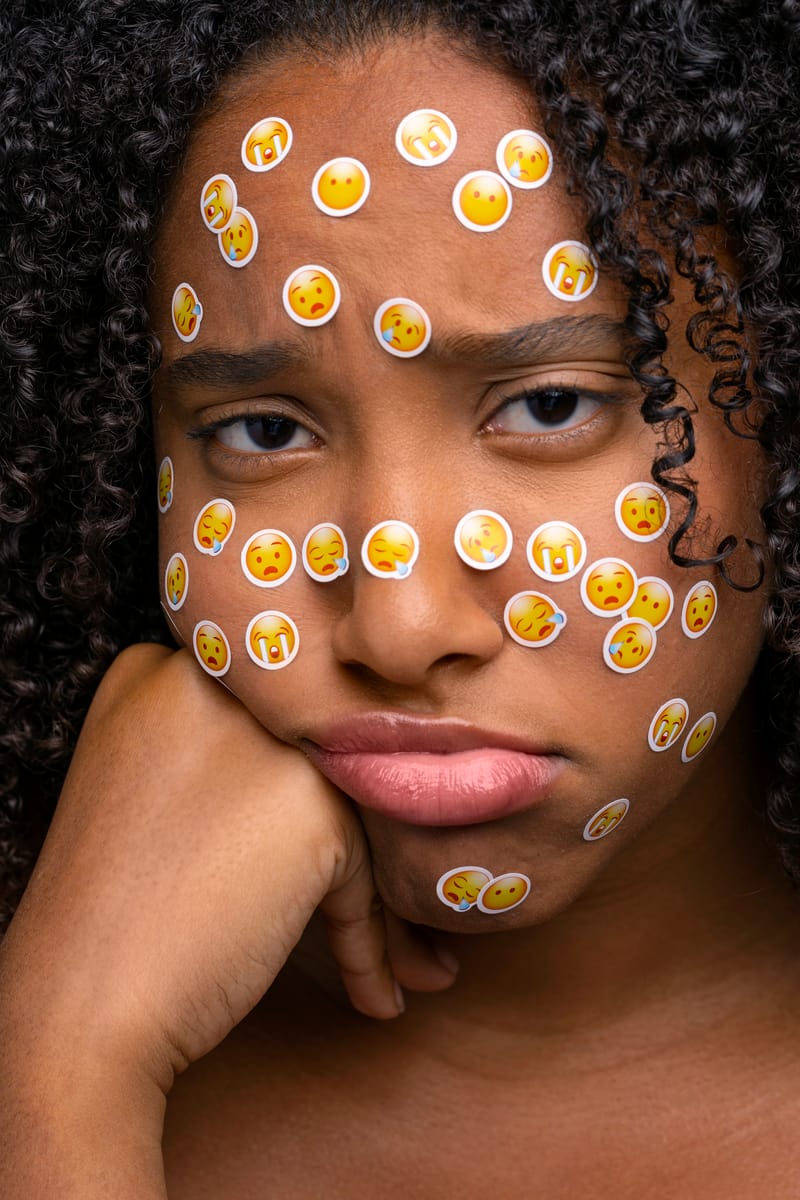Key Takeaways:
Pimple patches can be effective on unpopped pimples by protecting the area and absorbing pus and oil.
Hydrocolloid technology is the key ingredient in most pimple patches that helps in healing unpopped pimples.
It's essential to apply pimple patches correctly and choose the right type for your skin concern.
Understanding Pimple Patches and Their Function
Acne is a common skin concern affecting millions worldwide, and the quest for the perfect remedy has led to the innovation of pimple patches. These small, discrete patches are not just a trend; they are a revolution in the skincare industry. In this comprehensive guide, we'll delve into the world of pimple patches, exploring their functionality, types, and how to use them effectively.
Pimple patches, also known as acne stickers, are small, round, and often transparent stickers are made to be placed directly over a pimple. The primary function of these patches is to protect the affected area from bacteria and external irritants, which can exacerbate the pimple. They create a moist environment that promotes healing and can also absorb excess pus and oil, which helps to reduce inflammation and size of the pimple.
The technology behind most pimple patches is hydrocolloid, a substance traditionally used in medical dressings for wounds. This material gently draws out fluids and pus from the sometimes painful pimple, which can be particularly effective for those that have come to a head but are not yet popped. The hydrocolloid also helps to prevent scarring by keeping the area moist and protected from picking or external bacteria.
The Science Behind Pimple Patches on Unpopped Pimples
When it comes to unpopped pimples, the question arises: can pimple patches still do their job? The answer lies in the type of pimple and the stage it's in. For closed comedones (whiteheads) that have not yet come to a head, pimple patches may not be able to draw out pus since there is no open pore. However, they can still help by protecting the pimple from further irritation and by providing a barrier that keeps you from picking at it. For pimples that are inflamed but not yet open (papules and pustules), pimple patches can help in reducing redness and swelling. This can make the pimple less noticeable and help it heal faster.
The effectiveness of pimple patches lies in their ingredients and the technology used to create them. Most commonly, they are made from hydrocolloid material, a substance used in medical dressings that absorbs fluid and promotes healing. Some patches also contain active ingredients like salicylic acid or tea tree oil, which are known for their acne-fighting properties. The occlusive nature of the patch not only keeps out contaminants but also speeds up the healing process by ensuring that the active ingredients are concentrated on the pimple.
Types of Pimple Patches
There are several types of pimple patches which deal with acne available on the market, each designed for specific kinds of acne or stages of a pimple's life cycle. Hydrocolloid pimple patches are best for whiteheads, as they absorb pus and reduce inflammation. Medicated patches often contain ingredients like salicylic acid or benzoyl peroxide, which are suitable for treating more stubborn acne. Lastly, microneedle patches, or microdart patches, are a newer innovation that uses tiny self-dissolving needles to deliver active ingredients deeper into the skin.
Choosing the Right Pimple Patch for Your Skin Concern
As mentioned above, not all pimple patches are created equal, and choosing the right one for your specific skin concern is essential. Some patches are infused with active blemish busting ingredients like salicylic acid or tea tree oil, which can help to treat the pimple beyond just absorbing fluids. These are particularly useful for unpopped pimples as they can penetrate the skin and help to dissolve the blockage causing the pimple.
For sensitive skin, it's best to opt for patches without added active ingredients to minimize the risk of irritation. It's also important to consider the size of the patch in relation to the size of the pimple. A patch that's too small may not cover the entire affected area, while one that's too large can adhere to healthy skin and potentially cause irritation.
When to Use Pimple Patches
The mighty patch is most effective when used at the right time in a pimple's lifecycle. They are ideal for use on pimples that have come to a head, where the white pus is visible. This is when hydrocolloid acne patches can work their magic by absorbing the gunk. For deeper, cystic pimples, microneedle patches may be more appropriate. It's important to apply the patch to clean, dry skin and leave it on for the recommended amount of time, usually several hours to overnight.
How to Apply Pimple Patches for Maximum Effectiveness
For pimple patches to work effectively on unpopped pimples, correct application is crucial. The skin should be clean and dry before applying the patch. This ensures that the patch adheres properly and can perform optimally. Avoid using any skincare products underneath the patch, as they can interfere with adhesion and the patch's ability to absorb fluids.
Once the patch is applied, it's usually best to leave it on for several hours or overnight to allow the hydrocolloid material to work. You'll know it's working when the patch turns from clear to white, which indicates that it has absorbed pus and oil. After removing the patch, cleanse the area gently to ensure that no residue is left behind.
Practical Examples of Pimple Patch Success on Unpopped Pimples
Real-world examples can provide insight into the effectiveness of pimple patches on unpopped pimples. Many users report that after applying a patch to a red, inflamed, but unopened pimple overnight, they wake up to find the inflammation significantly reduced. The pimple itself may not disappear entirely, but the patch can accelerate the healing process and make the pimple less prominent.
Case studies from skincare companies often showcase before-and-after results of using their pimple patches. These visual examples can be compelling evidence of the patches' ability to flatten and calm down unpopped pimples, even if they don't extract pus in the same way they would for a popped pimple.
The Role of Pimple Patches in a Comprehensive Skincare Routine
While pimple patches can be a helpful tool in addressing unpopped pimples, they should be part of a broader skincare routine. Consistent cleansing, exfoliating, and moisturizing can help prevent acne from forming in the first place. When pimples do appear, pimple patches can be used as a spot treatment in conjunction with other acne-fighting products.
It's also important to note that pimple patches are not a cure-all. They work best when used on individual pimples rather than widespread acne breakouts. For more severe or persistent acne, consulting a dermatologist is recommended to explore other treatment options that can be used alongside or instead of pimple patches.
Pimple patches are a convenient, on-the-go solution for unexpected breakouts and can be worn during the day under makeup or at night during sleep.
Some common mistakes to avoid when using Pimple Patches
Pimple patches have gained popularity as a quick and effective solution for treating pimples. However, there are some common mistakes that people often make when using these acne patches that can hinder their effectiveness. One common mistake is not properly cleaning the skin before applying the patch. It is essential to cleanse the affected area thoroughly to remove dirt, oil, and bacteria before applying the patch. Failing to do so can prevent the active ingredients in the patch from effectively penetrating into the pimple and reducing inflammation.
Another mistake is leaving the pimple patch on for too long or not replacing it regularly. Pimple patches work by absorbing excess oil and pus from the pimple, but if left on for too long, they can become saturated and less effective. It is recommended to change the patch every 6-12 hours or as directed by the product instructions. Additionally, removing a dirty or worn-out patch and replacing it with a fresh one helps maintain cleanliness and hygiene, preventing further breakouts.
In conclusion, when using pimple patches, it is crucial to clean the skin properly and replace the patches at regular intervals. Avoiding these common mistakes will ensure maximum effectiveness in treating pimples and speeding up their healing process.
Pros and Cons of Pimple Patches
Like any skincare product, pimple patches have their advantages and limitations. These translucent stickers are discreet, easy to use, and can prevent scarring by protecting the pimple from picking. However, they may not be suitable for all types of acne, particularly those that are not raised or have not come to a head. Additionally, some people may experience sensitivity to the adhesive or active ingredients.
Comparing Pimple Patches to Traditional Acne Treatments
Pimple patches offer a targeted treatment compared to traditional acne treatments, which often take a broader approach and tackle larger breakouts. Creams and gels can be effective but may take longer to work and can dry out or irritate surrounding skin. Pimple patches provide a localized treatment that minimizes side effects and works quickly to reduce the appearance of blemishes.
Innovations and Future of Pimple Patches
The skincare industry continues to innovate, and pimple patches are no exception. Newer patches are being developed with advanced technologies, such as light therapy and time-release ingredients, to enhance their effectiveness. As research progresses, we can expect to see even more sophisticated options for treating acne with pimple patches.
Summary
Pimple patches are a modern, targeted approach to treating acne that can be easily incorporated into any skincare routine. They come in various types, each with its own set of benefits, and when used correctly, can significantly reduce the healing time of pimples. While they may not replace traditional acne treatments entirely, they offer a convenient and effective option for managing breakouts.
The key is to apply them correctly, choose the right type for your skin concern, and use them as part of a comprehensive skincare routine. While they may not work miracles overnight, they can certainly help to accelerate the healing process and make pimples less noticeable.
FAQ Section
Q: Can acne pimple patches make unpopped pimples worse? A: Generally, pimple patches do not make unpopped pimples worse. They are designed to protect the area and help with healing. However, if you have an allergy or sensitivity to the adhesive or active ingredients, it could cause irritation. Always patch test a new product if you have sensitive skin.
Q: How long should I leave a pimple patch on an unpopped pimple? A: It's usually recommended to leave a pimple patch on for several hours or overnight. This gives the hydrocolloid material enough time to absorb fluids and reduce inflammation.
Q: Are pimple patches suitable for all skin types? A: Pimple patches are generally suitable for all skin types, but those with sensitive skin should opt for patches without added active ingredients. It's always best to consult with a dermatologist if you have concerns about introducing a new product to your skincare routine.
For more information about Pimple Patches please click the link below!








